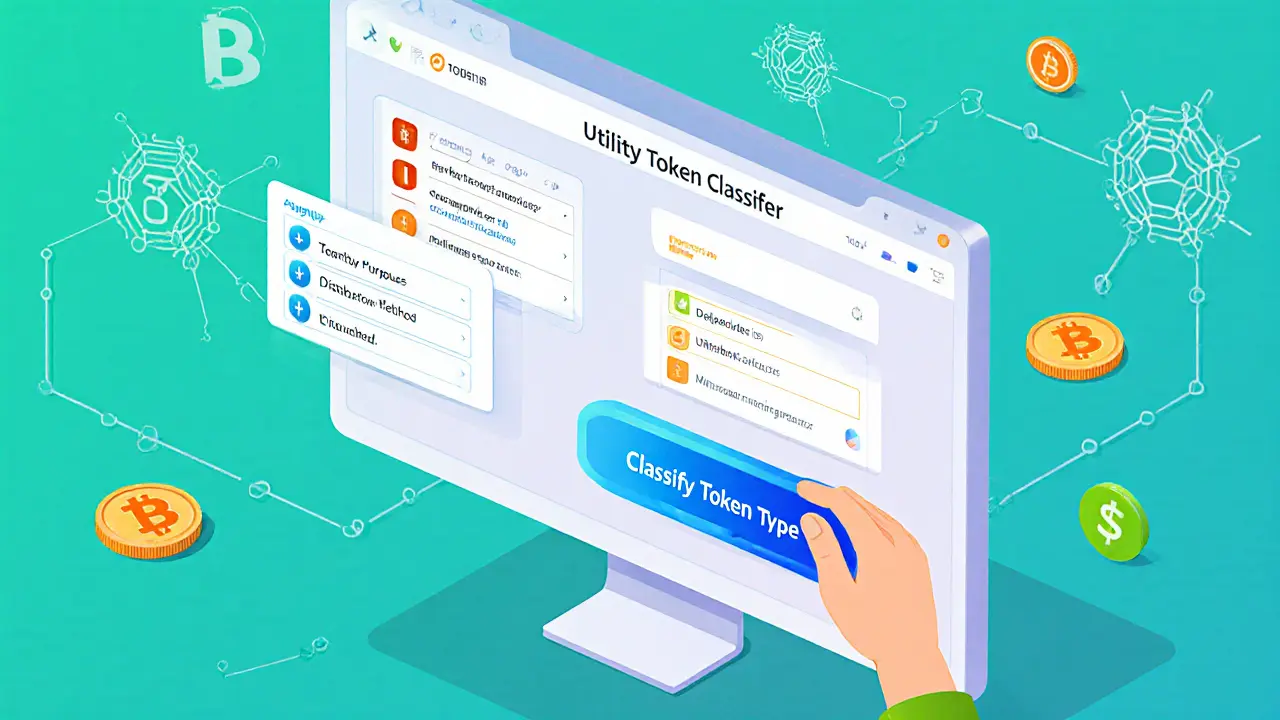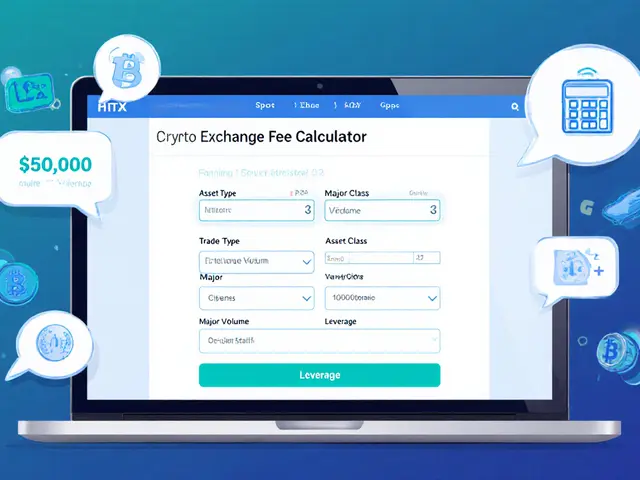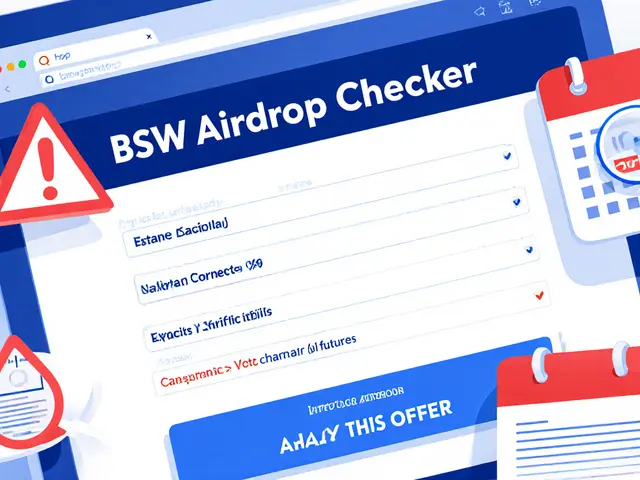- Home
- ::
- Utility Token Regulation and Compliance: A Practical Guide for 2025

Utility Token Regulation and Compliance: A Practical Guide for 2025
Utility Token Classifier
Enter details and click "Classify Token Type" to see the classification result.
Utility token regulation is no longer a niche concern-it's a core part of launching any blockchain‑based product in 2025. Whether you're a startup sprinting to an IDO or an established firm tweaking tokenomics, you need to know which rules apply, how to stay compliant, and what practical steps keep your project on solid legal ground.
Quick Take
- Utility tokens grant access to a service; they aren’t securities if they pass the Howey Test.
- The U.S. and EU take opposite angles: the SEC focuses on investment criteria, while MiCA offers a dedicated crypto framework.
- Get a formal legal opinion early; it saves redesign costs later.
- Embed on‑chain compliance checks-automated KYC, transfer restrictions, and DAO voting rules.
- Watch emerging trends: decentralization thresholds, real‑world asset hybrids, and the 2025 Stablecoin Trust Act.
What Exactly Is a Utility Token?
When building blockchain projects, Utility Token is a digital asset that gives holders the right to use a product, service, or feature within a decentralized application, rather than representing equity or debt. Think of it as a prepaid ticket for the ecosystem: you buy the token, then spend it on transaction fees, data storage, or voting power.
Because the token’s value is tied to demand for the underlying service, not to a company’s profits, regulators often treat it differently from a security. However, the line blurs when the token promises profit, dividends, or is heavily marketed as an investment.
Real‑world examples illustrate the concept. Basic Attention Token (BAT) is a utility token used in the Brave browser to reward users for viewing ads and to pay advertisers. BAT never claims ownership in Brave; it simply fuels a specific function-advertising exchange.
How the Howey Test Shapes Token Classification
In the United States, the Supreme Court’s 1946 decision in SEC v. W.J. Howey Co. created a four‑prong test to decide whether an asset is a security. The test asks:
- Is there an investment of money?
- Is there a common enterprise?
- Do investors expect profits?
- Are those profits derived primarily from the efforts of others?
If all four are true, the asset falls under federal securities law. Howey Test is therefore the litmus paper for utility token classification in the U.S.
Project teams can steer clear of “security” status by ensuring:
- The token’s utility is central-access to a platform, not a share of profits.
- Token distribution isn’t pitched as an investment opportunity.
- Governance is decentralized, limiting any single party’s ability to influence token value.
When a token fails these safeguards, the SEC may bring enforcement actions, fines, and mandatory token rescission.
Global Regulatory Landscape: United States vs. European Union
Regulators around the world are still catching up, but two frameworks dominate the conversation.
| Aspect | United States | European Union |
|---|---|---|
| Primary Regulator | SEC (securities) & CFTC (commodities) | European Commission via MiCA |
| Legal Test | Howey Test (case‑by‑case) | MiCA’s functional definition (access‑right focus) |
| Licensing | No specific crypto licence; may need securities registration | Crypto‑asset service providers must obtain a MiCA licence |
| Enforcement Trend (2024‑25) | Aggressive SEC actions, pending FIT Act dual‑regime proposal | MiCA implementation, gradual compliance guidance, focus on consumer protection |
| Stablecoin Specifics | Stablecoin Trust Act (expected 2025) introduces federal licensing | MiCA includes separate stablecoin regime with reserve‑audit obligations |
In practice, a token that passes the Howey Test in the U.S. may still need to meet MiCA’s “utility” criteria if you plan to sell to EU investors. Cross‑border token offerings therefore require a dual‑jurisdiction compliance strategy.

Step‑by‑Step Compliance Checklist for Issuers
Follow this practical list to reduce regulatory risk from day one.
- Define the token’s purpose. Draft a whitepaper that clearly states the token is for access, not profit.
- Choose a blockchain platform. Ethereum remains the most widely supported smart‑contract platform, with ERC‑20 and ERC‑1155 standards for utility tokens.
- Design tokenomics. Set a fixed or capped supply, specify vesting schedules, and avoid mechanisms that generate passive income.
- Conduct a legal classification review. Engage a law firm to produce a formal opinion addressing the Howey Test, MiCA, and any local regulator.
- Implement on‑chain compliance. Add smart‑contract checks for KYC/AML, transfer limits, and DAO‑based governance where applicable.
- Prepare disclosure documents. If the token could be deemed a security, file FormS‑1 or a RegulationD offering notice.
- Monitor regulatory updates. Subscribe to SEC enforcement alerts and EU Commission guidelines; adjust token logic as needed.
- Plan for audits. Secure a third‑party audit of the smart contract code and a periodic legal audit of token classification.
Skipping any of these steps often leads to costly retrofits or enforcement actions.
Technical Controls: Embedding Compliance Into Smart Contracts
Compliance isn’t just a legal footnote; it can be coded directly into the token contract.
- KYC/AML gating. Before a transfer, the contract calls an off‑chain oracle that verifies the recipient’s identity status.
- Transfer restrictions. Use a “whitelist” mapping to allow only vetted addresses to receive tokens during a pre‑sale phase.
- Automated vesting. Smart‑contract‑enforced schedules ensure founders and advisors can’t dump tokens early, reducing the perception of profit‑driven distribution.
- DAO‑based governance. DAO is a decentralized autonomous organization that lets token holders vote on protocol upgrades without a central authority. Demonstrating genuine decentralization bolsters a utility‑token argument under both the Howey Test and MiCA.
Remember, on‑chain logic can be overridden by off‑chain governance changes, so maintain clear documentation of any manual interventions.
Emerging Trends Shaping Future Compliance
Regulators are watching three big shifts that will affect how you structure utility tokens.
- Decentralization thresholds. Drafts in the U.S. Congress propose a “decentralization safe harbor” that defines a numeric metric (e.g., >50% of voting power distributed among token holders) for utility‑token exemption.
- Real‑world asset hybrids. Tokens that represent a claim on physical goods (e.g., tokenized carbon credits) risk being re‑characterized as securities unless the utility function is dominant.
- Stablecoin oversight spillover. The upcoming Stablecoin Trust Act may expand the definition of “commodity” to include certain utility token use‑cases, especially if the token is used for payments at scale.
Proactive projects are already adjusting: they embed DAO voting to meet decentralization metrics, separate utility and asset‑backed components, and design token burns that limit supply without promising returns.
Next Steps for Your Project
After reading this guide, you should be able to answer three critical questions:
- Does my token’s function pass the Howey Test and MiCA’s utility definition?
- Which jurisdictional licences or disclosures do I need before a public sale?
- How can I embed compliance checks directly into my smart contract?
If any answer is “no” or “unsure,” schedule a legal opinion and start redesigning the tokenomics. The cost of a few weeks’ work now is tiny compared with the expense of a forced token redesign after a regulator steps in.
Frequently Asked Questions
Can I launch a utility token without a legal opinion?
Technically you can, but most jurisdictions treat a missing opinion as a red flag. Without a formal classification, you risk being forced to register as a security, pay fines, or reverse the token distribution.
What’s the difference between ERC‑20 and ERC‑1155 for utility tokens?
ERC‑20 is a single‑type token standard, ideal for simple access tokens. ERC‑1155 supports multiple token types in one contract, useful if your platform issues both access tokens and in‑game items.
Do DAO governance mechanisms guarantee a utility‑token classification?
DAO structures help but don’t guarantee exemption. Regulators still look at token economics, marketing language, and profit expectations.
How does the Stablecoin Trust Act affect non‑stable utility tokens?
The Act mainly targets stablecoins, but its broader definition of “digital commodity” may capture high‑volume utility tokens used for payments, prompting additional reporting requirements.
What are the biggest compliance mistakes startups make?
Skipping the legal opinion, over‑promising returns in marketing, and ignoring on‑chain KYC/AML checks are the top three pitfalls that lead to SEC or EU enforcement.


 Finance
Finance





Write a comment